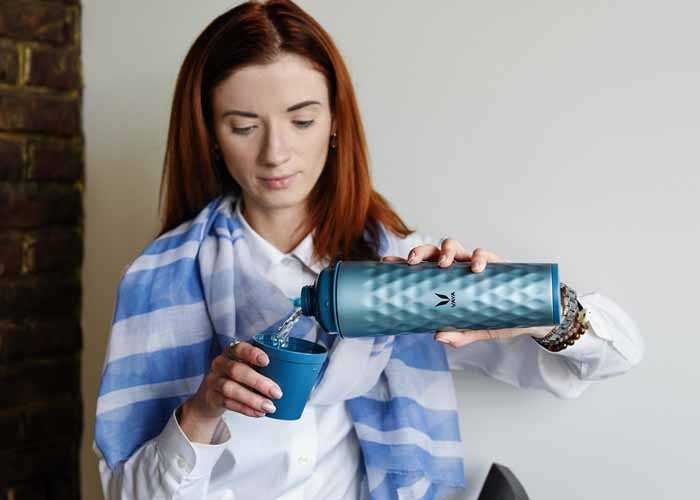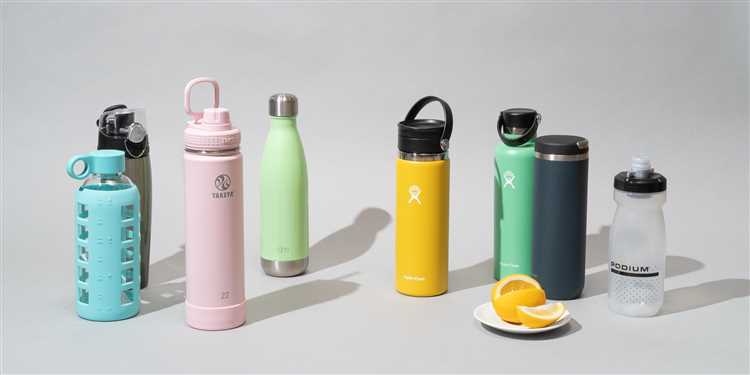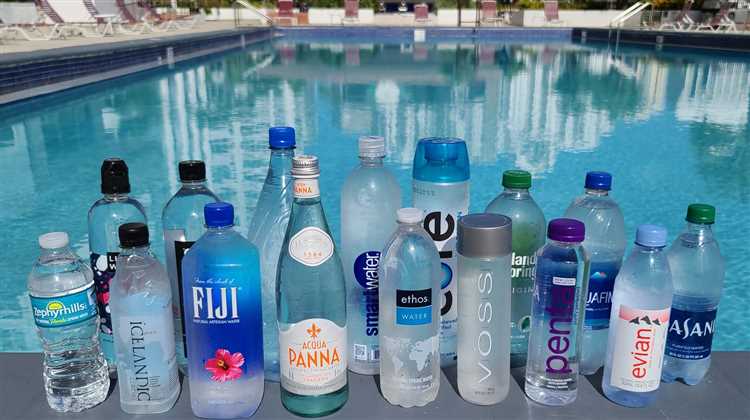
When it comes to drinking water, safety is the utmost priority. One of the key factors that contribute to the safety of drinking water is the container it is stored in. Plastic containers are commonly used for storing water due to their affordability, durability, and convenience. However, not all plastics are created equal when it comes to safety. Certain types of plastics may leach harmful chemicals into the water, posing health risks to the consumers.
One of the safest types of plastic for drinking water is high-density polyethylene (HDPE). HDPE is a sturdy and opaque plastic that is resistant to UV rays, which helps to maintain the integrity and quality of the water. It is also a non-toxic plastic that does not leach harmful chemicals into the water. This makes HDPE an excellent choice for water containers, as it ensures that the water remains safe for consumption.
Another safe option for drinking water containers is polypropylene (PP). Similar to HDPE, PP is a non-toxic plastic that is resistant to chemical leaching. It is highly durable and can withstand high temperatures, making it suitable for both hot and cold water storage. PP containers are also lightweight and easy to handle, making them a popular choice among consumers.
On the other hand, it is advisable to avoid certain types of plastics when it comes to storing drinking water. These include polycarbonate (PC) and polyvinyl chloride (PVC). PC plastics contain bisphenol A (BPA), a chemical that has been linked to various health issues. PVC plastics, on the other hand, can release phthalates, which are harmful chemicals, into the water. It is recommended to opt for safer alternatives such as HDPE or PP to ensure the safety of drinking water.
In conclusion, choosing the right plastic for drinking water is crucial for ensuring the safety and quality of the water. HDPE and PP are among the safest options, as they are non-toxic and resistant to chemical leaching. On the contrary, PC and PVC plastics should be avoided due to their potential health risks. By selecting the appropriate plastic container, you can enjoy peace of mind knowing that your drinking water is safe and free from harmful contaminants.
- Why Choose Safe Plastic for Drinking Water?
- The Benefits of Safe Plastic for Drinking Water
- Tips for Choosing Safe Plastic for Drinking Water
- Understanding the Different Types of Plastics
- Evaluating Plastic Safety Standards
- Factors to Consider when Choosing Safe Drinking Water Plastic
- 1. Material Safety
- 2. Environmental Impact
- 3. Durability and Longevity
- 4. Functionality and Convenience
- 5. Size and Capacity
- Best Practices for Storing Drinking Water in Plastic Containers
- Q&A:
- Which types of plastic are considered the safest for drinking water?
- Why is it important to choose the safest plastic for drinking water?
- Are there any specific numbers or symbols on plastic containers that indicate they are safe for drinking water?
- What are some alternative options to plastic for drinking water?
Why Choose Safe Plastic for Drinking Water?

Choosing the right plastic for drinking water is crucial to ensure the safety and health of yourself and your family. With the growing concern over plastic pollution and its potential impact on human health, it is essential to make informed decisions about the materials we use to store and consume water.
Safe plastics, such as those labeled with the recycling codes #2, #4, and #5, are considered to be the best options for drinking water containers. These plastics are known to be free from harmful chemicals that can leach into the water and pose health risks.
The Benefits of Safe Plastic for Drinking Water
By choosing safe plastic for drinking water, you can enjoy several benefits:
- Safety: Safe plastics are designed to be free from harmful substances that can contaminate the water.
- Health: Using safe plastics reduces the risk of ingesting toxins and chemicals that may have adverse effects on your health.
- Durability: Safe plastics are designed to be durable and long-lasting, ensuring that your water container remains intact over time.
- Convenience: Safe plastic containers are lightweight and portable, making them convenient for on-the-go use and transportation.
- Environmentally Friendly: Safe plastics can be recycled, reducing the overall environmental impact and promoting sustainability.
Tips for Choosing Safe Plastic for Drinking Water
To ensure that you are choosing the safest plastic for drinking water, consider the following tips:
- Check recycling codes: Look for plastics labeled with the recycling codes #2 (HDPE), #4 (LDPE), and #5 (PP), as these are considered safe for use with drinking water.
- Avoid plastics with recycling codes #3, #6, and #7: Plastics with these recycling codes may contain harmful chemicals and should be avoided.
- Look for BPA-free labels: Bisphenol A (BPA) is a chemical commonly found in certain plastics and has been linked to health concerns. Choosing BPA-free plastics is a safer option.
- Choose reputable brands: Opt for plastic products from trusted and reputable brands that prioritize safety and health.
- Consider alternative materials: If you are concerned about using plastic, consider alternative materials such as glass or stainless steel for drinking water containers.
By making informed choices and selecting safe plastic materials for drinking water, you can ensure that you and your loved ones stay healthy and hydrated without compromising on safety or the environment.
Understanding the Different Types of Plastics
Plastics have become an integral part of our daily lives, and it’s important to understand the different types of plastics and their potential impact on our health. When it comes to choosing the safest plastic for drinking water, it’s crucial to be informed about the materials used in packaging and their potential leaching of harmful chemicals.
There are various types of plastics, each with its own characteristics and potential risks. One commonly used plastic is polyethylene terephthalate (PET), which is often used for water bottles. It is considered safe for one-time use, but it may leach chemicals when exposed to high temperatures or prolonged use.
Another common type is high-density polyethylene (HDPE), typically used for milk jugs and detergent containers. HDPE is generally considered safe and is less likely to leach chemicals into the contents it holds.
Polyvinyl chloride (PVC), on the other hand, is a plastic often used for pipes and shower curtains. PVC contains harmful chemicals like phthalates and can leach them into water, making it an unsuitable option for drinking water storage.
Polycarbonate, another type of plastic, is known for its clear and shatterproof properties. It is commonly used in reusable water bottles and baby bottles. However, polycarbonate contains bisphenol A (BPA), which has been linked to various health issues. To reduce the risk of chemical leaching, it is recommended to choose BPA-free alternatives.
While choosing the safest plastic for drinking water is important, it’s also worth considering alternatives to plastic. Glass and stainless steel containers are non-toxic options that do not leach harmful chemicals into the contents. These materials are also more durable and can be reused multiple times, reducing waste and promoting sustainability.
In conclusion, understanding the different types of plastics is crucial for making informed decisions about the safest options for drinking water storage. By choosing plastics that are less likely to leach harmful chemicals or exploring alternative materials, we can prioritize our health and the environment.
Evaluating Plastic Safety Standards

When it comes to choosing the safest plastic for drinking water, it is crucial to understand and evaluate the plastic safety standards in place. These standards ensure that the plastic used for food and water contact is safe and does not pose any health risks.
The primary plastic safety standards include:
| Standard | Description |
|---|---|
| Food and Drug Administration (FDA) Compliance | The FDA sets regulations and guidelines for the use of plastics in contact with food and beverages. Plastics that are FDA compliant have gone through rigorous testing to ensure they are safe. |
| European Food Safety Authority (EFSA) Approval | The EFSA evaluates the safety of plastics used in contact with food and water in the European Union. Plastics that receive EFSA approval meet strict safety criteria. |
| American National Standards Institute (ANSI) Standards | ANSI develops standards for various industries, including plastics. These standards ensure that plastic products are safe and reliable. |
| International Organization for Standardization (ISO) Certification | ISO provides global standards for various aspects, including the safety of plastics used in food and water contact. ISO certification indicates that the plastic meets specific safety requirements. |
When evaluating plastic safety standards, it is also important to consider the specific regulatory requirements of your country or region. Different countries may have additional standards or regulations in place to ensure the safety of plastic materials.
By understanding and evaluating these plastic safety standards, consumers can make informed decisions when choosing plastics for drinking water. It is important to look for products that meet these standards and have undergone thorough testing to ensure their safety.
Factors to Consider when Choosing Safe Drinking Water Plastic
Choosing the right plastic container for drinking water is crucial for ensuring safety and minimizing health risks. Here are some important factors to consider when making your selection:
1. Material Safety
The first and foremost factor to consider is the material from which the plastic container is made. Look for containers that are labeled as food-grade or BPA-free. Food-grade plastics are specifically designed to be safe for storing and consuming food and beverages, while BPA-free plastics are free from bisphenol A, a potentially harmful chemical. Ensure that the plastic meets the necessary FDA regulations for contact with food and water.
2. Environmental Impact
Consider the environmental impact of the plastic container you choose. Opt for containers made from recycled materials or those that are recyclable themselves. This helps reduce the strain on the environment by promoting the reuse and recycling of plastic waste. Look for containers that are certified as eco-friendly and that have a minimal carbon footprint.
3. Durability and Longevity
Choose a plastic container that is durable and long-lasting. This not only ensures the safety of your drinking water but also reduces the need for frequent replacement. Look for containers that are resistant to cracks, scratches, and leaks, and that can withstand various temperature conditions. A durable container will also help reduce plastic waste by eliminating the need for constant disposal.
4. Functionality and Convenience
Consider the practicality and convenience of the plastic container. Look for containers that are lightweight and easy to carry, with a secure and leak-proof lid. Choose containers that are suitable for your specific needs, whether it’s for everyday use at home, outdoor activities, or travel. Some containers may also have additional features like built-in filters or insulation to keep your water clean and at the desired temperature.
5. Size and Capacity
Decide on the size and capacity of the plastic container based on your drinking water needs. Consider how much water you need to carry or store, whether it’s for individual use or for a group. Smaller containers are portable and convenient for personal use, while larger containers are more suitable for families or group outings. Ensure that the container can be easily filled and cleaned.
By considering these factors, you can make an informed choice when selecting a safe drinking water plastic container. Prioritize your health and the environment by choosing a container that meets the necessary safety standards while being practical and sustainable.
Best Practices for Storing Drinking Water in Plastic Containers
When it comes to storing drinking water in plastic containers, there are a few best practices that can help ensure the safety and quality of the water. Whether you are storing water for emergencies or for everyday use, following these guidelines can help you make the most of your plastic containers:
1. Choose BPA-free containers: Bisphenol A (BPA) is a chemical often found in plastic containers and can leach into the water, posing potential health risks. Opt for BPA-free containers to minimize the chances of contamination.
2. Look for food-grade plastic: Make sure the plastic containers you choose are labeled as “food-grade”. These containers are designed specifically for storing food and beverages and are made from materials that are safe for consumption.
3. Avoid reusing single-use containers: While it may be tempting to reuse single-use water bottles for storing drinking water, it is not recommended. These bottles are not designed for long-term storage and can deteriorate over time, potentially releasing harmful chemicals into the water.
4. Clean and sanitize containers before use: Before storing water in plastic containers, make sure to thoroughly clean and sanitize them. Use hot, soapy water and rinse well to remove any dirt or residue. Additionally, you can sanitize the containers by using a mixture of 1 teaspoon of bleach per gallon of water. Rinse the containers thoroughly after sanitizing.
5. Store in a cool, dark place: To maintain the quality of the water, store the plastic containers in a cool, dark place away from direct sunlight. Exposure to heat and sunlight can accelerate the breakdown of the plastic and increase the chances of leaching chemicals into the water.
6. Rotate and replace water regularly: If you are storing drinking water for long-term use, it is important to rotate and replace the water regularly. Water should be replaced every six months to ensure freshness and quality.
By following these best practices, you can ensure that the water stored in plastic containers remains safe and of high quality for your drinking needs. Remember to always prioritize the safety of your drinking water and be mindful of the type of plastic containers you choose.
Q&A:
Which types of plastic are considered the safest for drinking water?
Some of the safest types of plastic for drinking water are high-density polyethylene (HDPE) and polypropylene (PP). These plastics do not leach chemicals into the water and are commonly used in food and beverage containers.
Why is it important to choose the safest plastic for drinking water?
It is important to choose the safest plastic for drinking water because certain plastics can leach harmful chemicals into the water. These chemicals may pose health risks when consumed over time. By choosing a safe plastic, you can minimize your exposure to potential toxins.
Are there any specific numbers or symbols on plastic containers that indicate they are safe for drinking water?
Yes, there are certain numbers and symbols on plastic containers that indicate their safety for drinking water. Look for containers with the numbers 2, 4, or 5 inside the recycling symbol. These numbers indicate that the plastic is made of HDPE, LDPE, PP, or a combination of these materials, which are considered safe for drinking water.
What are some alternative options to plastic for drinking water?
There are several alternative options to plastic for drinking water. Glass and stainless steel are popular choices as they do not leach chemicals into the water. Additionally, there are now reusable water bottles made from materials such as bamboo and silicone that are also considered safe alternatives to plastic.